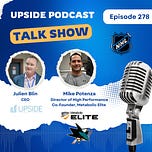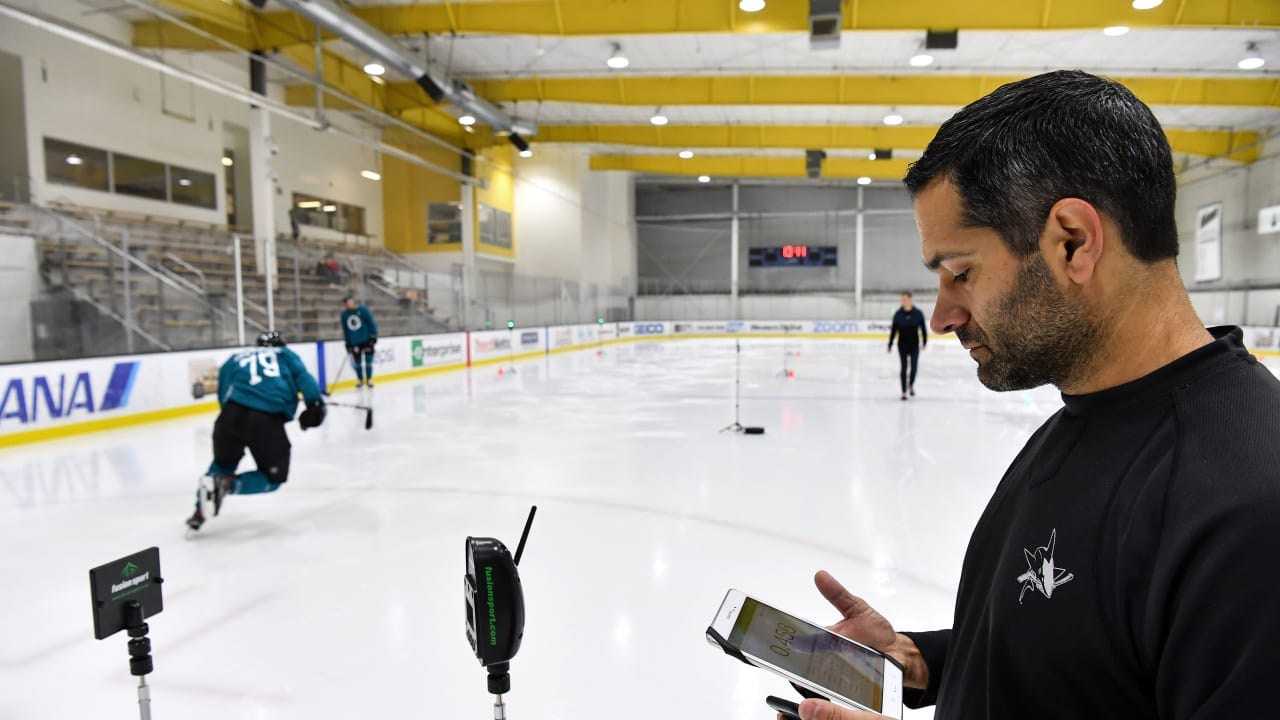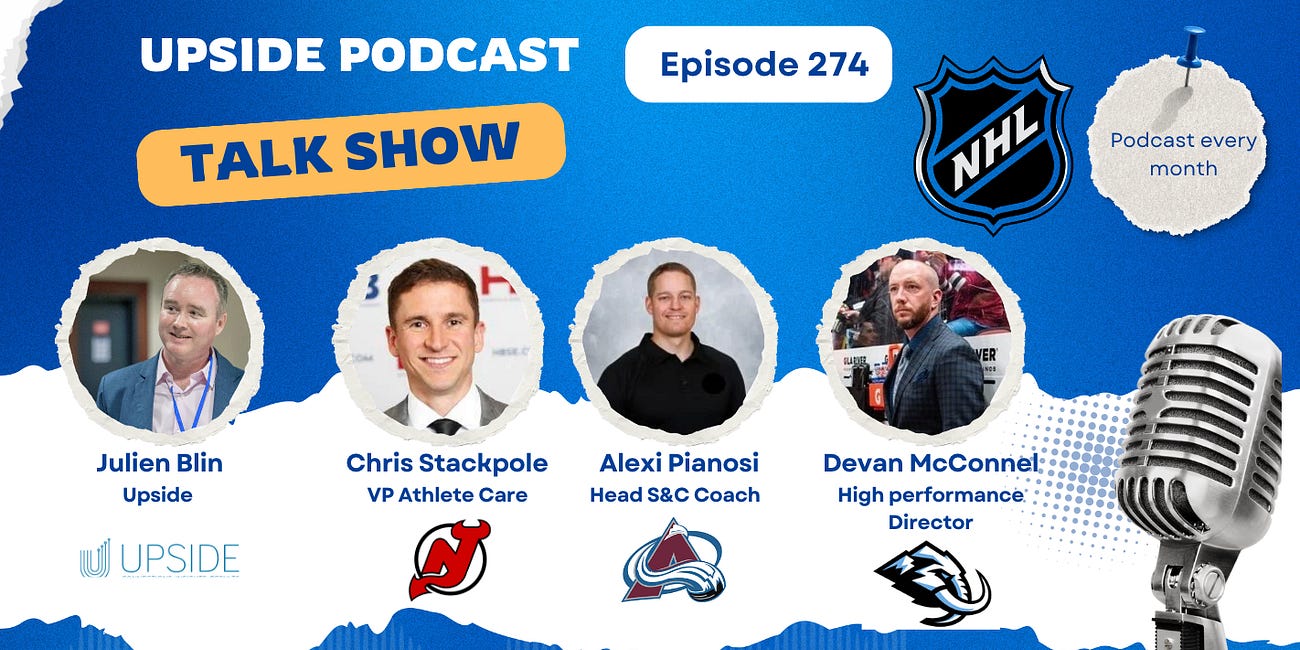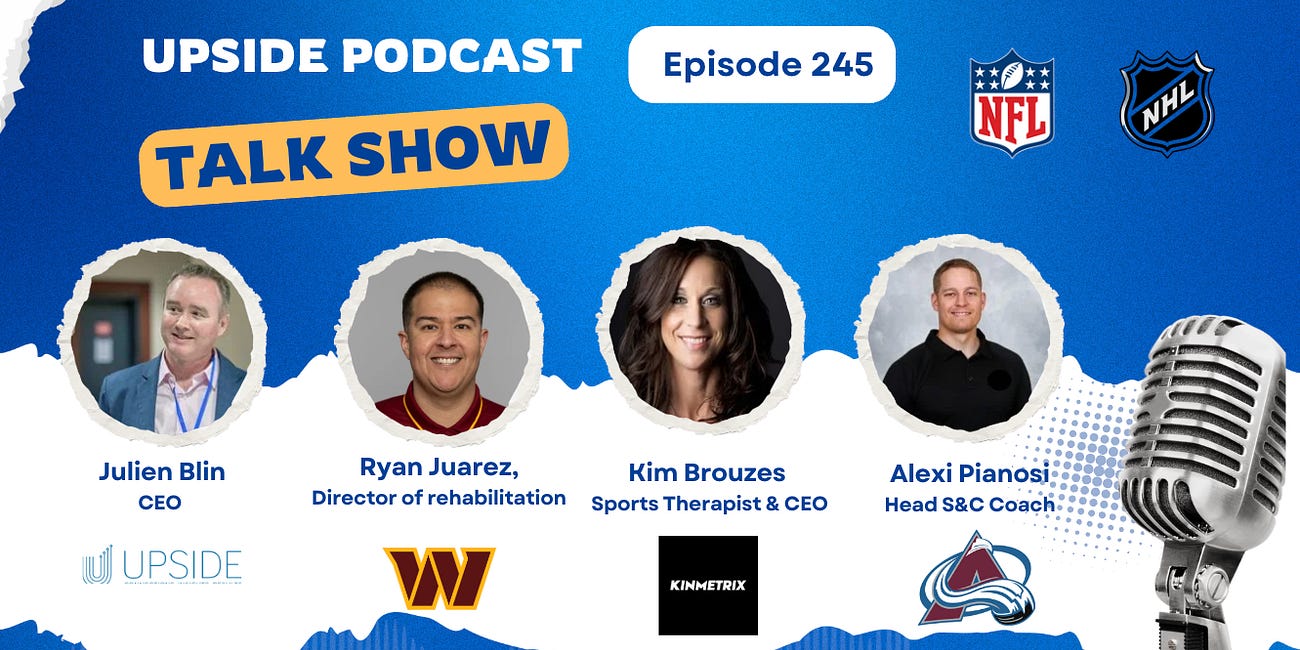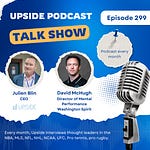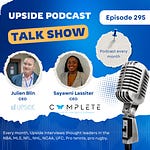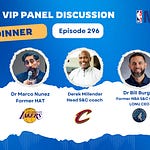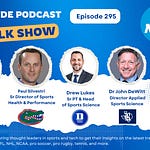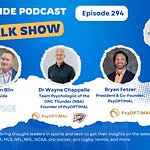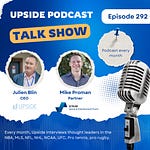Today we have the honor of interviewing Mike Potenza, M.Ed., C.S.C.S., TSAC-F, the Director of High Performance for the San Jose Sharks (NHL). Mike is also the Co-Founder of Metabolic Elite, a cutting edge supplement and nutrition company.
At the the San Jose Sharks, Mike oversees the performance department, sports medicine, player reconditioning, nutrition, budgeting, and facilities for both the Sharks and Barracuda teams. Now in his 17th season with the Sharks, Mike also spent two years with the Golden State Warriors (2022–2024), where he managed player physical training, coordinated performance testing, supported nutrition planning, and designed return-to-play programs. Beyond professional sports, he co-founded Metabolic Elite, a precision sports nutrition company, and serves as Managing Partner and Director of Performance for Tactical Fitness and Performance, extending his expertise into both athlete and tactical populations.
Mike has held leadership positions as Vice President (2015–2019) and President (2019–2022) of the NHL Strength Coaches Association, where he worked closely with the league on training protocols, performance testing, COVID policies, the Combine, and equipment standards. His work also includes a decade of collaboration with U.S. Air Force Pararescue teams, implementing performance programs that became standardized across all National Guard Bureau units. Earlier in his career, he served as Strength and Conditioning Coach for the University of Wisconsin’s men’s and women’s hockey teams, helping both capture Division I National Championships in 2006. He earned his bachelor’s degree in Applied Exercise Science from Springfield College and a master’s degree in Physical Education with a concentration in Human Movement Science from Boston University. He lives in San Jose with his wife, Bonnie, and their three children, Griffin, Natalie, and Luca.
You can watch the video interview below by clicking on the Youtube link. You can also listen to the audio interview by clicking on the link at the top of the page:
Here is the picture of some of the Metabolic Elite products:
You can use the special code (UPSIDE15) which is an exclusive 15% off discount code (for 60 days) and click on the button below to buy Metabolic Elite products at a special rate:
Here is the video of the Elite minds podcast between Mike Potenza and Christian LaValle, Director of Operations at Metabolic Elite.
📝Show Notes: We discussed Mike Potenza’s role leading high performance for the San Jose Sharks, how NHL teams have evolved to embrace larger integrated performance staffs, and the strategies he uses to balance strength, speed, durability, and recovery over an 82-game season. He also shared the inspiration behind launching Metabolic Elite, a supplement company focused on targeted, banned-substance-tested products, the benefits for athletes and teams, and his vision for growth, including expanding into new markets and publishing independent studies to validate product efficacy.
Here are the best quotes from the interview with Mike:
On His Role and Philosophy
1. How his role evolved & shifts in NHL performance training
“When I first came into the league, the NHL functioned with three main positions on the support side: the head athletic trainer, the head equipment manager, and the head strength coach. That was pretty much it, and you had to make do with very little staff or support. There were no assistants, and in the minor leagues you might have a part-time or volunteer person if you were lucky. Fast forward to today, and the role of performance has completely evolved. Teams are investing in bigger staffs, in analytics, in sports medicine, and nutrition. During my two years with the Warriors, I got to see how the NBA builds out large and very specialized staffs around just 15 players—because those 15 guys represent such high value. That opened my eyes to how structured and well-resourced a performance team could be, and I’ve been able to bring those lessons back to San Jose. Now, I oversee the entire high performance department for both the Sharks and the Barracuda—medical, nutrition, and performance—and we’ve grown into a 12-person staff. I think that’s the biggest shift: the NHL finally seeing the value of putting a whole team of experts around the athlete, instead of relying on one or two people to do everything.”
2. On balancing strength, speed, durability & injury risk
“Hockey is one of the toughest sports to train for because you’re dealing with a unique combination of explosive speed, heavy contact, and one of the longest and most grueling seasons in professional sports. My philosophy is to start with a very robust assessment at the beginning of the year—performance testing, range of motion, medical history, force production data, and dynamometry scores. That gives us a clear profile of each athlete: where their deficiencies are, what asymmetries exist, and equally important, what their strengths are. I think it’s vital not just to fix weaknesses but also to remind players of what they’re already good at and build confidence around that. From there, we customize programming to fit those needs. It doesn’t stop at training camp—we reassess frequently throughout the year with blood work, body composition, jump scores, and force data. For players with longer injury histories, we monitor even more closely to stay ahead of potential issues. The goal is always the same: balance strength, speed, and durability while reducing the risk of injuries and keeping them on the ice for as many of those 82 games as possible.”
3. On strategies for sustaining performance over 82 games
“The NHL season is a grind—82 games, constant travel, late nights, and the physical wear and tear of collisions every single game. There’s no single magic solution that guarantees recovery, so our strategy is about layering small but meaningful interventions that add up. Sleep is the number one factor, and we take it very seriously. It starts with the basics: making sure the sleep environment is right, from the temperature of the room to the quality of the bed and pillow. It sounds trivial, but players will tell you immediately which hotels have bad beds, and that can make a huge difference. We also focus on nutrients that support both energy systems and sleep—things like magnesium, which gets depleted during high anaerobic work in games but is also critical for sleep quality. Then we use tools like breathing strategies and specialized chairs that help players downregulate and shift into parasympathetic mode after games. Travel adds another layer, so on planes we use compression garments, electrical muscle stimulation, and even customized deep-sleep hoodies that create a cocoon-like environment for rest. None of these things alone are a magic bullet, but together they make a real impact. The players notice it, and it helps them stay consistent through the season when recovery windows are short.”
4. On strategies for sustaining performance over 82 games
“If I look back now at what’s out there and compare it to what we didn’t have, it’s amazing how fast things have evolved. I think devices are going to get smaller, more portable, and require less infrastructure. For example, with Catapult, the chip is already small, but I think it’ll get even smaller and more convenient. Clear Sky systems in arenas might eventually disappear as everything gets tracked directly through accelerometers or a single hub. What does make me nervous is the AI component—AI designing workouts or projecting performance. I don’t think we’re there yet, and coaches still need to be coaches, but I do see AI playing a bigger role in program design and injury projections. At the same time, we still need better consolidation—systems that can truly bring everything together in one place. Right now, even with APIs, you often still have to revert back to Excel or build custom systems. Hopefully, that becomes more streamlined. The other area that excites me is biomechanics and wearables. Hockey is starting to see more advanced video-based biomechanical analysis, and I think we’ll get to a point where you don’t need tethers or belts—it’ll all be tracked through video overlays or chips. Some companies are already working on wearables that measure speed, stride, force output, and biomechanics in real time. That’s where the future is heading.”
On His Startup
5. Inspiration for launching Metabolic Elite
“The inspiration for Metabolic Elite really came from a frustration with the supplement and sports nutrition industry. I’ve been in pro sports long enough to see how inconsistent, confusing, and sometimes downright shady the supplement world can be for athletes. My co-founder, Jim LaValle, is one of the most respected experts in blood analysis, nutrition, and clinical pharmacy, and I remember telling him, ‘Why don’t you just do it yourself? Build your own sport line, call it Metabolic Elite, and make nutrients that are actually specific to the needs of athletes.’ Jim has decades of experience and has even formulated products for some of the biggest companies in the industry, but we wanted to do it differently—with integrity, with scientific backing, and with products designed for very specific use cases. We pulled together a board of advisors made up of performance coaches who live this world every day, and together we created a line of products that fill real gaps for athletes in training, recovery, and health. It wasn’t about making another generic protein powder or vitamin C—it was about building precise solutions that truly make a difference.”
6. On benefits for athletes and teams
“One of the biggest benefits we bring is trust and confidence. Every single product we make is banned-substance tested through BSCG, which means athletes at any level can use them without worrying about contamination or compliance. Beyond that, we’ve developed a liposomal chewable technology that’s shelf-stable for two years and has incredible absorption—something that doesn’t exist anywhere else in the market. That’s a huge differentiator. We’re not just repackaging generic formulas—we’re developing products like Enduro2, which uses a high-dose, clinically validated compound from Rhodiola to improve aerobic capacity, time to exhaustion, and recovery, or Synapsin, which sharpens focus and attention without caffeine or stimulants. These products aren’t theoretical—they’ve already become popular among NHL and NBA players, endurance athletes, and even everyday people who want to perform and recover better. The other exciting piece is how diverse the use cases are. We’re seeing adoption in sports, in rehab and clinical settings, and even among executives and weekend warriors who want more energy and focus. That broad appeal is where I see us making the biggest impact in the next few years.”
7. On pricing model & goals for the next 12 months
“Our model is designed to be flexible depending on who you are. Consumers can purchase directly online, trainers and coaches can join affiliate programs to promote the products, and clinics or performance centers can buy wholesale at 50% off retail. That way, whether you’re an individual athlete, a training center, or a rehab clinic, there’s an accessible pathway. Looking ahead, the next 12 months are critical for us. We know we need to raise capital—not just to drive marketing and awareness, but to hire more people and expand sales. Our biggest goals are to push deeper into professional and endurance sports, get our products into more clinics, and validate everything we do with independent university studies. We already have multiple studies lined up with major institutions, and we want to be one of the few companies in this space that can back up claims with real science. In three years, I want Metabolic Elite to be recognized not just as another supplement brand, but as the go-to company for high-level, targeted formulations backed by education, transparency, and evidence.”
8. On the best way to reach out to Mike about Metabolic Elite:
“The best way is my Metabolic Elite email—mike@metabolicelite.co. I’ll respond back and we can even jump on a call if you’re interested in any of the products. You can also go right to the website, where there’s a lot of information to browse through. I think people will find it educational.”
You may also like:
🔥Upside NHL Group Chat with Alexi Pianosi (Colorado Avalanche), Chris Stackpole (NJ Devils), Devan McConnell (Utah Mammoth) On Data & Metrics, Tech ROI, Emerging Tech, Team Culture
This week we have the honor to interview a group of NHL sports performance executives to talk about the latest trends in the world of sports performance in the NHL.
🔥Upside NFL/NHL Group Chat with Alexi Pianosi (Colorado Avalanche/NHL), Kim Brouzes (Kinmetrix), Ryan Juarez (Commanders/NFL) On Concussion Assessment & Management
This week we have the honor to interview a group of rehab and performance experts across the NFL and NHL. We discussed concussion assessment and management, their approach to this topic, the various modalities, best practices and trends that they are seeing in the market.
🔥Upside NHL Group Chat with Alexi Pianosi (Colorado Avalanche), Chris Stackpole (NJ Devils), Adam Douglas (Penguins)
This week we have the honor to interview a group of NHL sports performance executives to talk about the latest trends in the world of sports performance, load management, sleep/recovery management, rehabilitation and data & wearable tech integration, and mental performance in the NHL.

